SD › Best Places to Stay on Kauai
Updated: November 13, 2021
By Santorini Dave
See Also
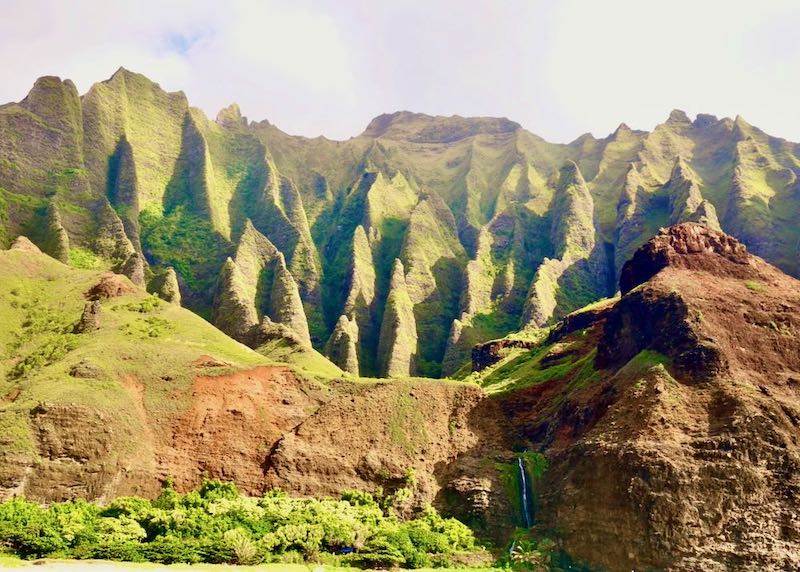
A tiny waterfall and the rugged spires of the Na Pali Coast in Hanalei. Kauai is the least commercialized of Hawaii’s main islands.
Best Areas to Stay on Kauai
Often called the Garden Island, Kauai is known as the greenest of the Hawaiian Islands. Over 97% of its area is undeveloped rainforest or inaccessible mountain ranges, and the vast majority of the island is inaccessible by car or foot. There are no highways on Kauai. The roads here cover the coastal regions in the shape of a backward “C,” with no roads on the northwest coast or in the heart of the island. Much of the interior is only available to see from a helicopter (heli-tours are super popular here), and many secluded beaches on the northwest coast are only accessible by boat, kayak, or a strenuous hike. Kauai is over five million years old, making it the oldest main island in the Hawaiian chain – about four and a half million years older than the Big Island. Millions of years of erosion have created breathtaking landscapes, including the rugged Na Pali Coast and the colorful desert of Waimea Canyon. Just fifteen kilometers east of the desert is Mount Waialeale, a long-dormant volcano covered in an emerald cloud forest and one of the world’s rainiest spots. Of course, Kauai is also wrapped in sandy beaches. Po’ipu Beach on the south side of the island is the most developed beach with the largest concentration of luxury hotels; Hanalei Bay on the north side is a crescent-shaped bay with three family-friendly beaches and a pier. The east side of the island from the south end of the Kawaihau district to the north end of the Lihue district is home to a stretch of golden sand beaches known as the Coconut Coast. The west side of the island from Waimea to the Na Pali Coast is home to the most remote, relaxed beaches with the best sunset views. But no matter where you stay on Kauai, expect to see and hear chickens, known here as moa. After two large hurricanes leveled the island last century, domestic chickens escaped and bred with the red junglefowl brought to Hawaii by the original Polynesian settlers, creating the feral chicken population of today – which has become the unofficial “state bird” of Kauai.
For most travelers, the south side of the island at Koloa will be the best area to stay. The resort area of Po’ipu here offers the best mix of sunny weather, sandy beaches, high-end hotels, and top-notch restaurants. Hanalei, at the north side of the island is home to a surfer haven also called Hanalei, the master-planned luxury resort area Princeville, and the wild Na Pali Coast. Lihue on the southeast coast is the most convenient home base for exploring the whole island, with gorgeous beaches of its own as well as the island’s airport. Just north of Lihue is the Wailua River and Fern Grotto (a lava rock cave popular on boat tours), which make up the border between Lihue and Kawaihau. Kawaihau is the best area for living like a local. Kauai’s largest town, Kapa’a, is here known for its laid-back vibe, charming boutiques, and small yet mighty foodie scene. On the west side, the Waimea district is the driest part of Kauai; Waimea Canyon here is among the most popular attractions on Kauai.
Best Places to Stay in Kauai
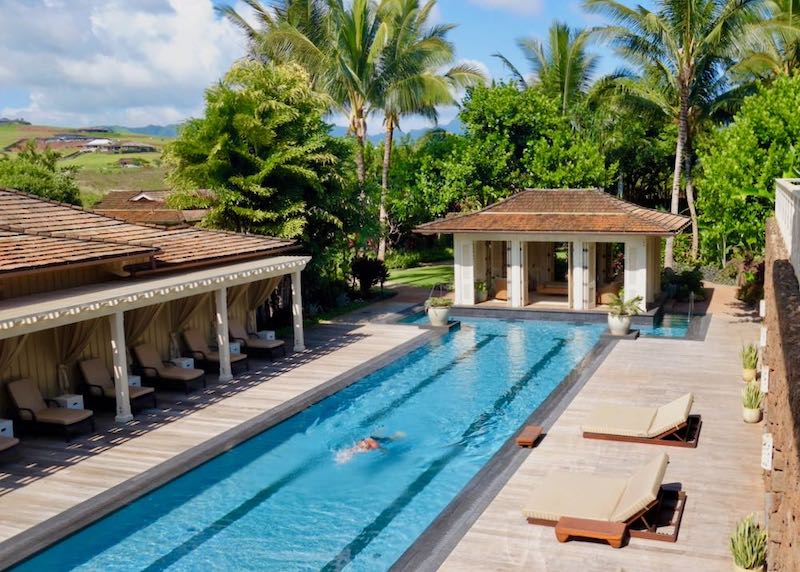
The Lodge at Kukui’ula is one of Kauai’s best luxury, family-friendly resorts. Facilities include cascading pools, a waterslide, a farm and orchard, a decadent spa, and world-class golf in the sunny Po’ipu area.
- Best Luxury Hotels on Kauai
Grand Hyatt Kauai Resort & Spa • Koa Kea Hotel & Resort • The Lodge at Kukui’ula - Best Family Hotels on Kauai
Grand Hyatt Kauai Resort & Spa • Hilton Garden Inn • Whalers Cove in Poipu - Best Boutique Hotels on Kauai
Fern Grotto Inn • Hotel Coral Reef • Kauai Coast Resort at the Beach Boy - Best Cheap/Midrange Hotels on Kauai
Banyan Harbor Resort • Waimea Plantation Cottages
Best Areas on Kauai for…
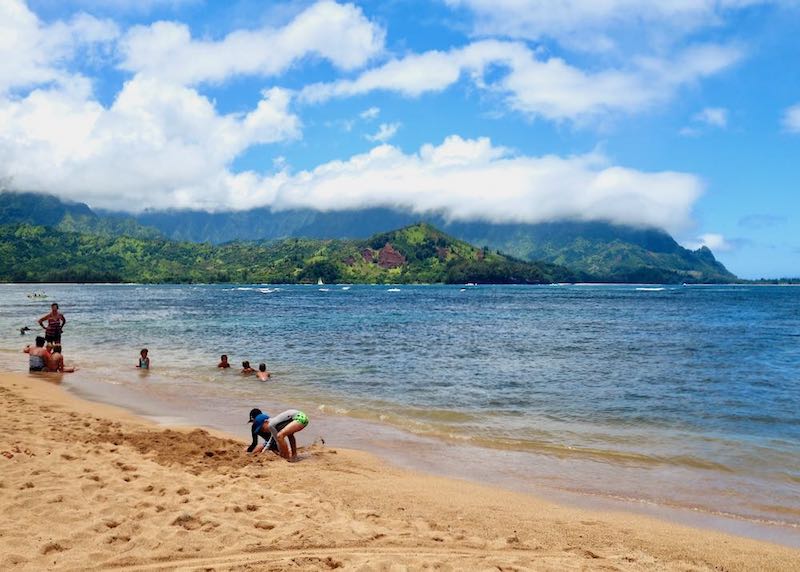
Crescent-shaped Hanalei Bay on the north side of Kauai is home to three stunning beaches, among the very best in Hawaii.
- Best Beaches on Kauai: Koloa, Hanalei, Lihue
Koloa offers the best combination of sunny, sandy, swimmable beaches on Kauai with Po’ipu Beach being the most famous. Hanalei is home to a gorgeous stretch of sandy, swimmable beaches with great snorkeling and lush mountain scenery. Lihue boasts a handful of wonderful family-friendly beaches in protected coves or lagoons, ideal for beginning swimmers. - Best Places for Families on Kauai: Koloa, Hanalei, Lihue, Kawaihau
Koloa is the most popular spot for families on Kauai, known for sunny days, excellent beaches, and luxury hotels with activities for kids and families. Hanalei offers beautiful swimming with reef-protected coves and tidepools popular for exploring, plus laid-back lodging, and wonderful local restaurants. Lihue offers kid-friendly beaches, a historic downtown area, great dining and shopping, and easy access to the airport. Kawaihau features several family-friendly beaches all connected by a bike path (flat and easy to ride), plus authentic dining, a fun food truck scene, and unique shopping. - Most Romantic Places on Kauai: Koloa, Hanalei, Waimea
For a luxury-style romantic getaway, Koloa offers the best resorts with stylish rooms and suites, high-end restaurants, and craft cocktail bars. Hanalei features more relaxed dining and accommodations paired with dramatic landscapes and secluded beaches. Waimea is the most remote part of Kauai, known for its breathtaking canyon, sunset beaches, a tangle of hiking trails, and a string of small, artsy towns. - Best Places for Sightseeing on Kauai: Koloa, Hanalei, Lihue, Waimea
Aside from posh lodging and stellar beaches, Koloa is also home to plantation-era Koloa Town, the Koloa Heritage Trail, and the island’s best-loved botanical gardens. At the north end of Kauai, Hanalei is where you’ll find the rugged Na Pali Coast and Kilauea National Wildlife Refuge (a seabird sanctuary with a hundred-year-old lighthouse). Lihue features plenty of historic, cultural, and natural attractions, including Wailua Falls, plus its central location makes it an excellent spot for exploring the island. Waimea is best-known for its canyon and hiking trails, but it is also home to Port Allen in Ele’ele, where most Na Pali Coast cruise boats sail from, as well as the longest stretch of sandy beach in Hawaii, sunset views, views over Ni’ihau, and close-up views of the Na Palo cliffs at the very north end of Polihale Beach. - Safest Areas on Kauai
Kauai is a very safe place to visit with a lower crime rate than most parts of the mainland U.S. and competing with the Big Island for the safest county in Hawaii (they take turns holding this title every year). Crimes that occur here tend to be property crimes, especially bike theft and theft of items from rental cars. Though Kauai as a whole has a low crime rate, the safest places are at the resorts in Koloa and in laid back Hanalei. - Unsafe Areas on Kauai
Overall, Kauai is one of the safest places to stay in Hawaii and the U.S. However, crime does happen, so basic precautions still apply. Don’t leave valuables unattended in a rental car or on the beaches while swimming, even if you’re in a resort. Don’t walk alone in deserted areas at night. And most importantly, be aware of currents and waves when swimming in the ocean; many of Kauai’s beaches experience strong currents and swells, especially in the winter months. Crimes tend to be property-related rather than violent. Areas to exercise caution in are Kapa’a (as it’s the most populated town, there is a higher incidence of overall crime) and Hanamaulu (a small town just north of the Lihue airport with a higher than average crime rate).
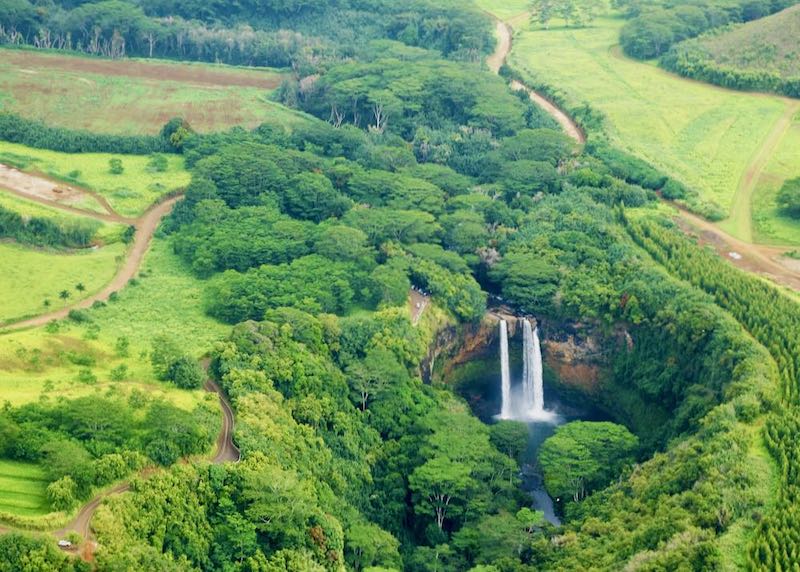
Wailua Falls in Lihue was featured in the opening credits of Fantasy Island in 1977. About 80 films and tv shows have been shot in Kauai, including Raiders of the Lost Ark and four Jurassic Park movies.
Best Towns & Areas on Kauai for Tourists
1. Koloa
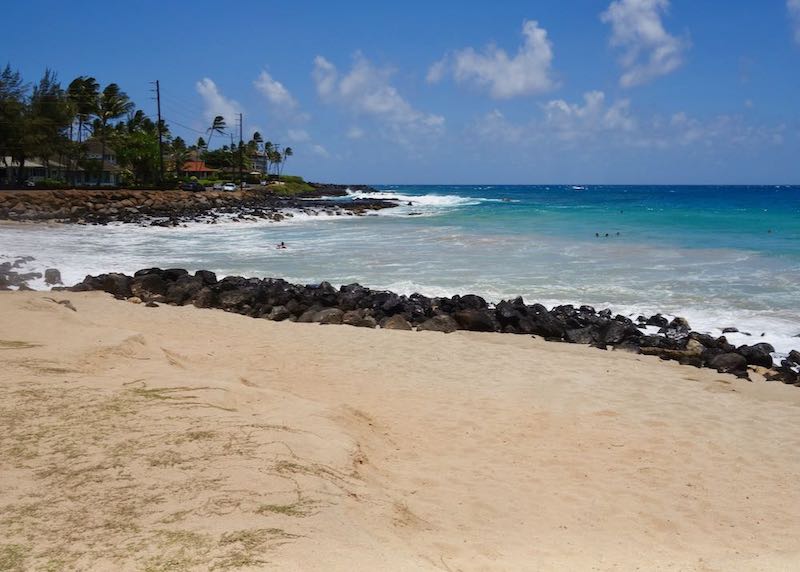
Most travelers in Kauai will opt to stay on the island’s south shore in Koloa. This area offers an almost perfect mix of sunny days, sandy beaches, top-notch resorts, and excellent dining, nightlife, and shopping. The Koloa district has two main areas: historic Koloa Town and contemporary Po’ipu. The town of Koloa was home to Hawaii’s first sugar mill in 1835, and much of its architecture dates back to the plantation era, though the old storefronts are now filled with modern boutiques and quality restaurants and food markets – check out La Spezia for Italian fare, Lappert’s Hawaiian locally made ice cream, and Koloa Fish Market’s authentic, affordable plate lunches. On the Koloa Coast, travelers will find Po’ipu, an upscale, beachfront resort town, where most of the island’s luxury hotels and a few golf courses are located. Shopping and dining here tend to be more upscale than in Koloa town. Po’ipu Beach is a series of three half-moon, sandy coves with gentle waves and a coral reef filled with tropical fish, popular for snorkeling, swimming, and beginners’ surfing. Po’ipu is the biggest, most popular beach in the area, but all along the coastline are sandy beaches set in small coves, some protected by the reef with calmer water and others with larger waves and excellent surfing. Some of the best area attractions are spread over the length of the Koloa Heritage Trail. This 16-kilometer-long route begins at Spouting Horn blowhole, a scenic lookout and lava tube important in Hawaiian lore, and continues to Prince Kuhio’s (the People’s Prince) birthplace, Kihahouna Heiau (an ancient Hawaiian temple), Koloa Jodo Mission (a 1910 Buddhist temple), and much more. Of course, the Garden Island is filled with botanical gardens and parks; the best of them are the McBryde and Allerton Gardens, located side-by-side and filled with local and exotic tropical species.
- Best Hotels: Grand Hyatt Kauai Resort & Spa • Koa Kea Hotel & Resort • The Lodge at Kukui’ula • Whalers Cove in Poipu
2. Hanalei
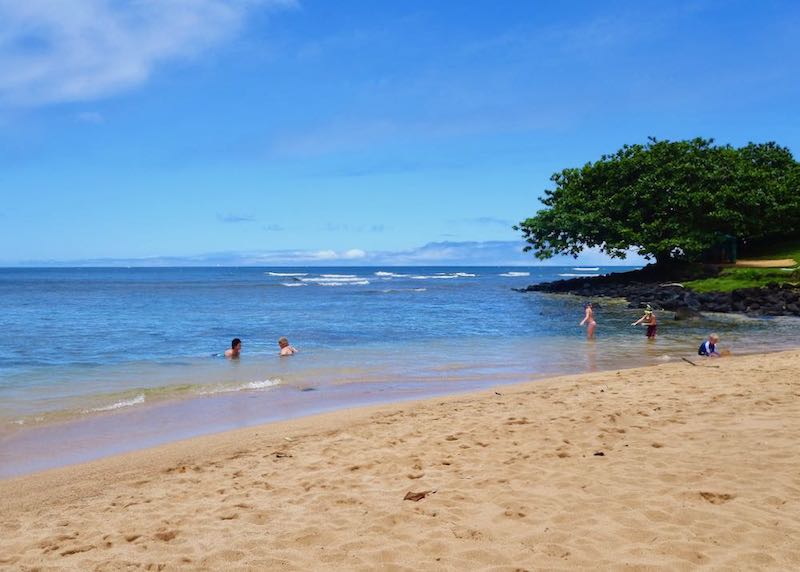
The Hanalei district covers the north shore of Kauai, from the Na Pali Coast in the west to Larsen’s Beach in the east at the edge of Kilauea town. Though Hanalei is generally less sunny and less visited than Koloa, the landscapes of the Hanalei region are more strikingly beautiful. The soaring spires and deep-cut waterfalls of the Na Pali Coast give way to the jade-green mountains cradling the waters of Hanalei Bay. Farther east, you’ll find the tidepools at Queen’s Bath in Princeville and at Mokolea Point in the Kilauea National Wildlife Refuge, a clifftop preserve for native seabirds and marine life with a historic 1913 lighthouse (lighthouse tours available on Wednesdays and Saturdays). The Hanalei region has historically been farmland, farmed extensively by the earliest Polynesian settlers who cultivated breadfruit, taro, yams, and more. Much of the land outside of the towns is still covered in acres of crops. Hanalei’s location on the north shore means great surfing with especially large waves in the winter months. Most of the coastline is fronted by a coral reef, which offers some protection from the biggest waves plus excellent snorkeling for more advanced swimmers, especially at Tunnels Beach, Hideaways Beach, and Nu’alolo Kai (accessible by boat only). Hanalei’s main towns are the laid-back surfer town of Hanalei, the small luxury resort Princeville, and the charming, old plantation town of Kilauea. Lodging, dining, and shopping in the Hanalei district are always casual. Aside from some high-end resorts inside Princeville, most accommodations here are mid-range or budget boutique hotels and B&Bs.
- Best Hotels: Hanalei Colony Resort • Hale Ho’o Maha Bed & Breakfast • The Cliffs at Princeville
3. Lihue
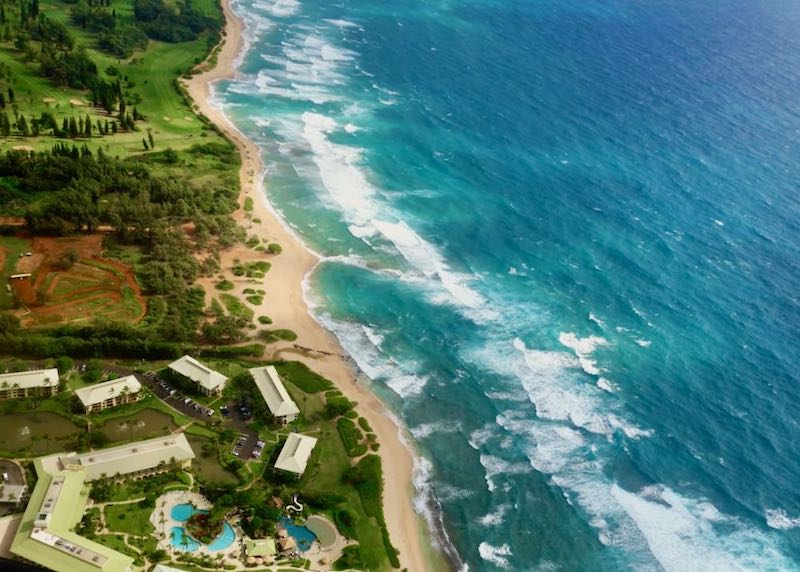
The Lihue district is located on the southeast side of the island, spanning the area from Kawelikoa Point in the south (after which Kohala begins) and the Wailua River in the north (where Kawaihau begins). The main town here, also called Lihue, is the second-largest on Kauai and is home to the Lihue Airport and Nawiliwili Harbor cruise ship port, making this town the first and last contact point for all visitors to the island. The government, historic, and commercial heart of the island, Lihue offers plenty of cultural attractions, natural beauty, and wonderful beaches. In the town center, visitors will find the Kauai Museum, a collection of ancient tools, historic artifacts, and artisanal crafts from Kauai and Ni’ihau, the Forbidden Island. South of the museum is Grove Farm, a mid-19th-century sugar plantation set on 100 acres, offering tours of the stately home, humble housekeepers’ quarters, tropical gardens, and sugar trains (small, steam-powered locomotives used to move raw sugarcane from the fields to the sugar mills – free train rides on offer the second Tuesday of every month from 10:00 a.m to 2:00 p.m). Farther north is the Wailua River, home to the luxuriantly leafy Fern Grotto lava cave (accessible by boat or kayak) and Wailua Falls (a pair of waterfalls plunging into a frigid yet swimmable pool). There are a few sandy, family-friendly beaches in Lihue, the best of which are Kalapaki and Lydgate. Kalapaki Beach is set in a protected cove with some of the calmest waters in Kauai, perfect for beginning swimmers and standup paddleboarding. Lydgate Beach (the southernmost point of the Coconut Coast) is set behind two lava rock walls and a coral reef, which breaks the waves while allowing an abundance of colorful fish through – a perfect spot for beginning snorkelers and swimmers. Accommodations in Lihue fit into the mid-range or budget categories.
- Best Hotels: Hilton Garden Inn • Kauai Marriott Resort • Marriott’s Kauai Beach Club
4. Kawaihau
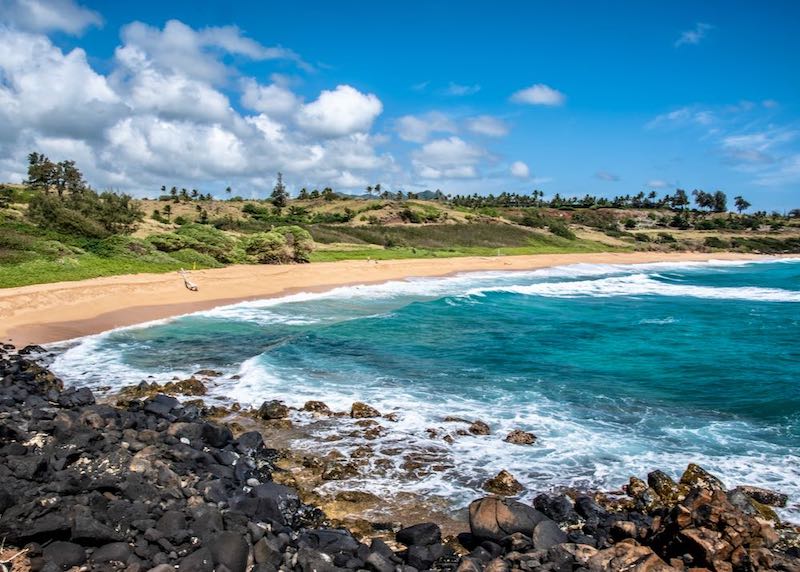
North of Lihue and east of Hanalei is the Kawaihau region, home to Kapa’a (Kauai’s largest city), most of Kauai’s Royal Coconut Coast, and Nounou Mountain (AKA Sleeping Giant). Though the most populated town on the island and the only spot in Kauai where rush hour happens, Kapa’a maintains a strong local vibe with plenty of restaurants and shopping catering to residents’ tastes. This eclectic, charming town is where to find delicious, affordable, authentic food, local artwork, artisanal crafts, and small boutiques. Kapa’a Farmers Market, the largest on the island with over 100 vendors, takes place here every Wednesday from 3:00 p.m. to 4:30 p.m. – popular vendors will sell completely out of stock within the first 10 minutes, so come early and bring cash. Kawaihau is also home to the Coconut Coast, the eastern beachfront of Kauai formerly reserved for Hawaiian royalty. The Coconut Coast begins in the Lihue region and extends north into Kawaihau, passing through Wailua town, through Kapa’a, and ending at Kealia Beach. This is where you’ll find the majority of Kawaihau’s hotels and resorts, white sand beaches, shopping centers, and activities: water sports centers, luaus, beach yoga, and more. All of the Royal Coconut Coast is connected by a bike path, Ke Ala Hele Makalae, which leads north passing by several sandy beaches and ending at Paliku Beach (AKA Donkey Beach – pictured above). The path will eventually be expanded to connect to Anahola, a quaint village at the north end of Kawaihai, down to Lihue. Being on the windward side of the island, the beaches here experience wind and swells, making them popular for surfing, windsurfing, and kitesurfing. Some of the calmer beaches in the area include Lae Nani, Fuji Beach, and Kapa’a Beach. All of the east side beaches offer excellent, unobstructed sunrise views over the ocean. Moving inland, travelers will find Nounou Mountain with three hiking trails leading up to the summit, where visitors are rewarded with sweeping views over eastern Kauai.
- Best Hotels: Fern Grotto Inn • Kauai Coast Resort at the Beach Boy • Hotel Coral Reef
5. Waimea
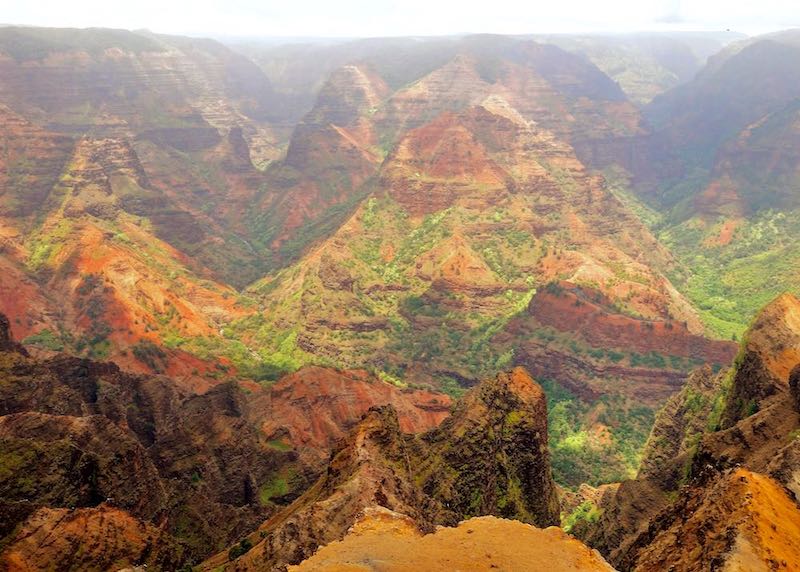
Waimea is the easternmost region of Kauai between Koloa and Hanalei. Unlike the rest of the island, filled with lush, tropical jungle, Waimea is dry. Its tropical savannah climate is not a true desert but sees very little rain outside of winter. The region’s main attraction is Waimea Canyon, often called the Grand Canyon of the Pacific. This incredible natural wonder grew from the collapse of a continually erupting volcano 4 million years ago, which filled the hole in with layers of lava, which was later eroded by rainfall rushing down from Mount Waialeale. The result is a 16-kilometer-long, 900-meter deep canyon in vibrant stripes of red, orange, and brown cut through with skinny waterfalls, crags, and gorges laced with patches of green foliage. Waimea is the least populated part of Kauai. The two main towns here are historic Waimea Town (where Captain Cook became the first European to land in Hawaii in 1778) and Ele’ele (home to Port Allen, where most Na Pali Coast cruises depart from). At 24-kilometers-long, Waimea’s coast is home to the longest uninterrupted stretch of sandy beach in the state of Hawaii, beginning at Kekaha Beach in the south, wrapping north around the headland to Polihale Beach, and ending abruptly at the towering cliffs of the Na Pali Coast. This is literally the end of the road on Kauai. As with most beaches in the Waimea region, Polihale and Kekaha have strong currents and are not ideal for swimming (though they are fairly popular for surfing). The best beach for swimming here is Salt Pond Beach Park in Ele’ele. All beaches on the Waimea Coast offer stunning sunset views toward Ni’ihau Island. Polihale Beach is unique for its proximity to the Forbidden Island, the Na Pali Coast, and for offering uninterrupted sunset views (without Ni’ihau blocking the horizon). Lodging in Waimea is few and far between, mostly in the budget range.
- Best Hotels: Waimea Plantation Cottages • The West Inn Kauai
About Santorini Dave